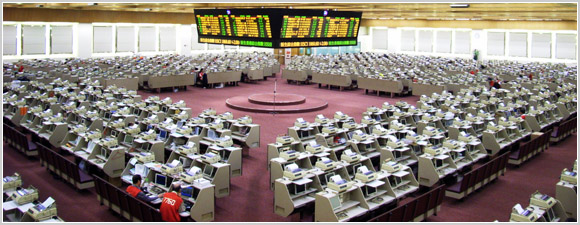The recent world-wide financial chaos has reminded us how sensitive the stock market is, with sharp up- and downturns. Now imagine the reaction of the stock traders if they couldn’t trade at all. It doesn’t happen very often, but it does happen.
Stock exchanges usually have strict SLAs and high demands on availability, but they can’t completely avoid downtime. We have gathered up some of the major stock exchange outages that have occurred so far this decade (i.e. since 2000 and onward) and listed when and why they happened.

April 5, 2000: London Stock Exchange
The opening of the London exchange was delayed by almost eight hours due to a failure in the computer system that feeds real-time stock prices to banks and brokerages.
July 18, 2000: Frankfurt Stock Exchange
Trading was stopped for over two hours when the exchange’s electronic trading system suffered a computer outage.
June 29, 2001: Nasdaq
An attempt by a WorldCom employee to run some diagnostics caused Nasdaq’s order-processing network (run by WorldCom) to crash. Nasdaq ended up having to halt trading completely for over an hour.
September 11–17, 2001: New York Stock Exchange, Nasdaq, and more
After the 9/11 terrorist attack, the New York Stock Exchange, Nasdaq and several other financial markets didn’t open again until September 17 (a Monday). There were of course other reasons than purely technical to keep the exchanges closed for that long, though there were severe telecom outages around Wall Street.
November 7, 2002: Australian Stock Exchange
The Australian Stock Exchange had to halt trading for more than three hours due to an outage caused by a software glitch.
May 25, 2005: Moscow Interbank Currency Exchange
A power outage in the Moscow area shut down the stock exchange for more than two hours. Although in this case it wasn’t really an outage at the exchange itself, trading had to be suspended since many of its clients simply didn’t have power.
June 22, 2005: New Zealand Stock Exchange
Two simultaneous telecom cable failures affecting all of New Zealand, one of them caused by rats chewing through a main communication cable, ended up forcing the New Zealand Stock Exchange to stop trading for five hours.
November 1, 2005: Tokyo Stock Exchange
A software bug caused a crash in both the main and the backup systems of the Tokyo Stock Exchange, forcing it to suspend trading for four and a half hours.
June 3, 2008: OMX Nordic Exchange and the Oslo Stock Exchange
The OMX Nordic Exchange and the Oslo Stock Exchange opened five and a half hours late due to a problem with the trading system. Just the day before, the start of trading had been delayed by 40 minutes due to the same problem. Stock exchanges in Stockholm, Copenhagen, Helsinki and Oslo were all affected (they use the same backend system).
September 8, 2008: London Stock Exchange
The London Stock Exchange had to stop trading for more than seven hours due an issue with its new trading platform, co-developed with Microsoft.
Stock exchanges in India vs. sun outages
Stock markets in India have their own set of problems: sun outages. The Bombay Stock Exchange and the National Stock Exchange networks rely on satellite communication for its member traders. This communication is sensitive to solar radiation, so the Indian stock exchanges therefore have to schedule their trading around these sun outages.
Accountability and outage factors
The problems listed above range from telecommunications issues to power outages, software issues and human errors. Very much like what would bring any major website down, though the stock exchanges have a much higher degree of accountability towards its customers. They must have. Stocks for billions are traded every day.
As in the Moscow example above, there are incidents were trading becomes problematic for some market members even thought the exchange itself if unaffected. A prominent recent example is when an earthquake outside Taiwan snapped several major undersea cables in December 2006, causing huge connectivity issues to and from the whole region (including among others China, Taiwan and Korea), which in turn caused problems with the trading on for example the Hong Kong Stock Exchange.
Personal experience of this?
If you have personal experience of working at an exchange either as a trader or technical staff and you have been in the middle of a big outage, we would love to read your perspective on this in the comments.
By the way, if you feel we have missed any big stock exchange incidents, please let us know below.
Photo by Heycreation.



























